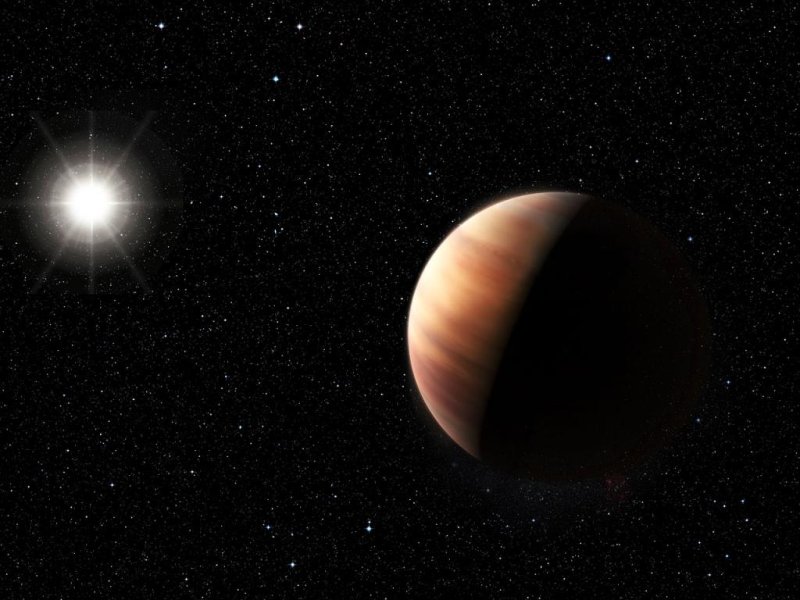A rendering shows the newly discovered Jupiter twin gas giant circling a sun very similar to our own. Photo by ESO/M. Kornmesser
CHICAGO, July 15 (UPI) -- A team of international astronomers may have found a solar system just like ours, lending hope to researchers looking to find rocky Earth-like exoplanets in the habitable zone.
Using data collected by the European Southern Observatory's 3.6-meter telescope, researchers recently located a Jupiter-like gas planet orbiting a sun nearly identical to our own.
Not only is the faraway gas giant similar in mass, size and composition to Jupiter, it's also orbiting its host star at distance similar to the separation between Jupiter and our sun. The star around which the Jupiter lookalike orbits is called HIP 11915, and it is equally resemblant of our sun -- featuring a similar mass, age and composition.
While researchers have yet to identify other exoplanets, the newly located solar system is likely to reveal new planetary discoveries as researchers probe further.
It's the familiar composition of HIP 11915 -- and the fact that Jupiter's twin is farther away and not closer in -- that makes researchers believe this solar system may have evolved a cast of planets similar to our own, including inner orbit rocky planets like Earth.
Kepler and other exoplanet survey missions have located a variety of alien solar systems. But the ones that are easiest to spot -- and thus the ones that are spotted most frequently -- are systems with stars that host big bloated planets with tight orbits. These big planets block out their sun's light, making them easier for Earth-bound algorithms to pick them out and identify them as exoplanets, but these systems are less likely to host the Earth-like planets scientists are most interested in.
"The quest for an Earth 2.0, and for a complete Solar System 2.0, is one of the most exciting endeavors in astronomy," Jorge Melendez, a researcher at the University of Sao Paulo and co-author of a new paper of the two twins, said in a press release. "We are thrilled to be part of this cutting-edge research, made possible by the observational facilities provided by ESO."
"After two decades of hunting for exoplanets, we are finally beginning to see long-period gas giant planets similar to those in our own solar system thanks to the long-term stability of planet-hunting instruments like HARPS," the High Accuracy Radial velocity Planet Searcher, added Megan Bedell, an astronomer at the University of Chicago and lead author of the new paper, soon to be published in the journal Astronomy & Astrophysics.
"This discovery is, in every respect, an exciting sign that other solar systems may be out there waiting to be discovered," she concluded.















